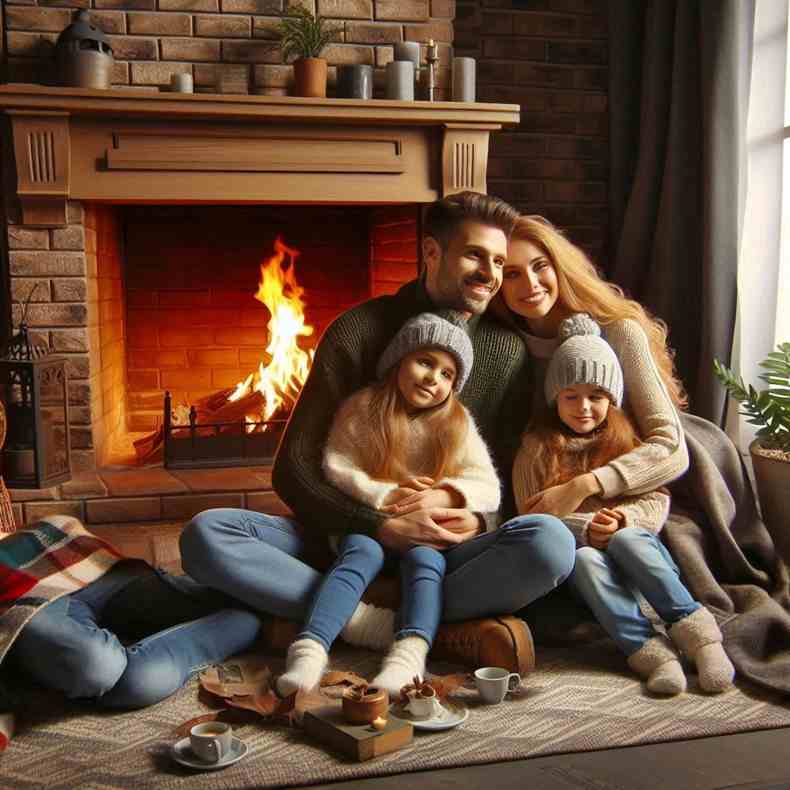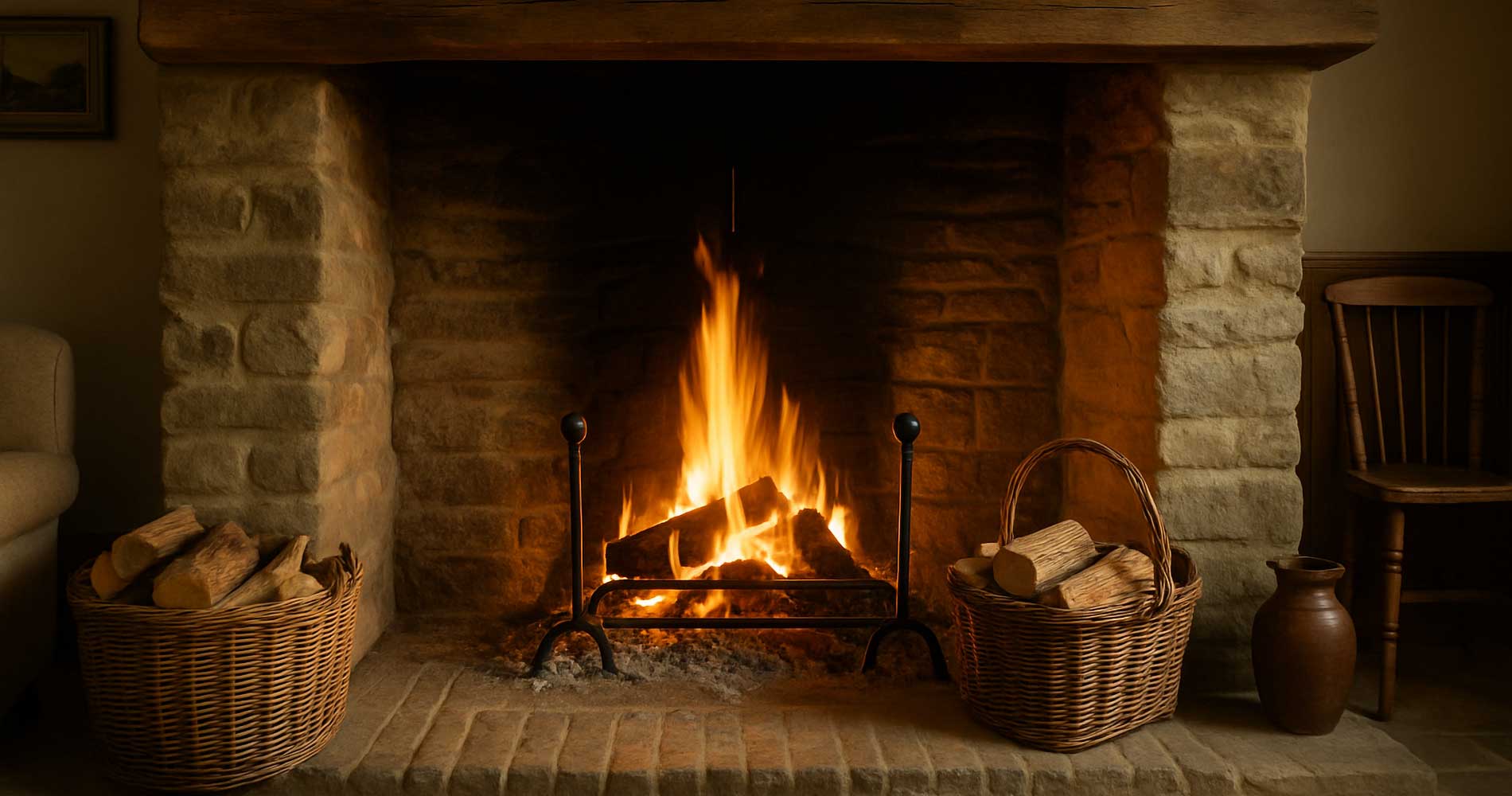That Cosy Glow Comes with Responsibility
Let’s be honest—there’s nothing quite like the crackle of a fire on a cold evening. It’s comforting, nostalgic, a bit romantic even. But the truth is, the fireplace isn’t just a charming feature. It’s a live flame, and that means it deserves a bit of respect and care.
Whether you’ve got a roaring open fire, a sleek modern stove, or something in between, safety has to be part of the story. You don’t need to become a fire warden overnight, but a few practical habits and thoughtful tweaks? They could make all the difference.
Start with the Basics: Annual Checks
One of the simplest—and most important—things you can do is book a yearly inspection. If you haven’t done it yet, add it to your calendar. Yes, really.
- Professional chimney sweep: Soot and creosote build up over time and can catch fire. A certified sweep will clean it out safely.
- Structural check: Cracks in the chimney or flue can allow smoke—or worse, fire—to spread into the home.
- Check your cap: Chimney caps stop rain, debris, and birds from getting inside. If yours is damaged or missing, it needs sorting.
Inspections might feel like a faff, but they catch problems before they become emergencies. Worth it? Absolutely.
Use the Right Fuel (Yes, It Matters)
Not all logs are created equal. Burning the wrong stuff doesn’t just fill the room with smoke—it can damage your fireplace and increase fire risk.
- Seasoned hardwood: Ash, oak, beech—dried properly for at least a year—burns hot and clean.
- Avoid treated wood: Painted or pressure-treated timber releases toxic fumes. Bin it, don’t burn it.
- Say no to rubbish: Cardboard, plastic, glossy magazines… tempting in a pinch, but bad for air quality and your chimney lining.
If it’s not meant for the fire, don’t put it in the fire. Simple.
Mind the Space Around the Fire
It only takes one rogue spark to set something alight. That’s why what’s near your fireplace matters almost as much as what’s in it.
- Keep rugs, curtains, and furniture at least three feet away
- Don’t leave baskets of kindling or logs too close to the hearth
- Decorative garlands or holiday stockings? Lovely, but hang them with care—and never leave them up during a fire
Basically, give your fire some breathing room. It’s not a shelf—it’s a source of serious heat.
Fireguards: Not Just for Granny’s House
If you’ve got pets, children, or even just a clumsy elbow, a fireguard is non-negotiable. You might think it spoils the view—but nothing ruins a cosy night faster than a burnt paw or a flying ember.
- Mesh screens: Great for catching sparks without blocking too much heat or light
- Glass doors: Sleek and modern, and they seal things off completely when the fire’s not in use
- Sturdy freestanding guards: Ideal for families with little explorers who don’t understand the word “hot”
Go on—embrace the safety screen. You’ll sleep better for it.

Never Leave a Fire Unattended
It sounds obvious, doesn’t it? But life gets busy. You pop out to put the kettle on or nip upstairs—and suddenly the living room is unattended with a roaring fire inside it.
Fires need supervision. Always. If you’re going out or heading to bed, make sure it’s fully extinguished. Stir the ashes, spread them out, and don’t leave any embers glowing.
You wouldn’t leave the oven on and go shopping, right? Treat your fire with the same caution.
Install Smoke and Carbon Monoxide Detectors
This one’s not negotiable. Even if your fireplace is the cleanest-burning, most lovingly maintained beauty in town—accidents happen. And fumes? They’re sneaky.
- Fit a smoke alarm in the room with your fireplace, and test it monthly
- Install a carbon monoxide detector nearby—this gas is colourless, odourless, and deadly
- Replace batteries regularly, or go for sealed 10-year units for peace of mind
These little devices could literally save your life. Not dramatic—just honest.
Store Ashes with Caution
Ashes might look innocent. But hot embers can smoulder unseen for days. Days!
- Use a metal container with a tight-fitting lid
- Keep it well away from the house—especially not on a wooden deck or near the bin
- Let ashes cool fully before disposing in the compost or garden
A warm ash pile left on a porch? It’s started more than one house fire. Don’t let it start yours.
Teach Everyone in the House
Fire safety isn’t just your job—it’s a family affair. If you’ve got kids or housemates, make sure they understand the basics too.
- What not to put in the fire (you’d be amazed what people try!)
- How to safely open and close any doors, dampers, or vents
- Where the fire extinguisher lives—and how to use it
- That fires are not a toy, a drying rack, or a place to toast marshmallows… unless supervised
Knowledge shared is safety multiplied.
And Finally... Trust Your Gut
If something smells odd, if smoke is coming back into the room, or if your fireplace is acting “off” in any way—don’t ignore it. Stop using it and call a professional.
Fires are beautiful, yes. But they’re not to be messed with. Your instincts matter. Listen to them.
Final Thoughts: Safety is Part of the Cosy
It’s easy to focus on the soft blankets and flickering flames and forget that a fireplace is still a powerful tool. But taking a few simple precautions makes it a safe one too.
So enjoy your hearth. Make memories by the fire. Just remember to treat it with a bit of caution, a bit of care, and maybe a trusty fireguard too.
Because the only thing better than a warm, crackling fire... is knowing you’re safe beside it.
